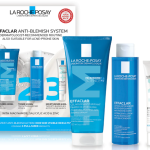You know that moment when you’re finally ready to get your medical device to market—and then someone brings up “FDA registration”? The mood shifts. Shoulders tense. Eyes glaze over. It feels like the start of a bureaucratic black hole, doesn’t it?
But let’s step back for a second. What if FDA registration isn’t just a formality? What if it’s one of the most important things you’ll ever do—not just for your business, but for the people counting on your product to work when it matters most?
Let’s break this thing down. No legal mumbo jumbo. No sterile, corporate fluff. Just straight talk about what FDA registration is, who actually needs it, and why skipping it might be the worst decision you never meant to make.
What Is FDA Registration, and Why Should You Care?
It’s not “approval”—and yes, that matters
Let’s clear the biggest misconception first: FDA registration is not the same thing as FDA approval. You don’t register your product and get a gold star from the agency saying, “Congrats, you’re officially safe and effective.” That’s not how it works.
Instead, FDA registration is the process where your company (a.k.a. your “establishment”) tells the FDA, ‘Hey, we exist, and we make or handle medical devices.’ It’s like checking in at the front desk before you enter the building. You’re not approved—you’re acknowledged.
Now, if you’re making a high-risk device (think implantable defibrillators or spinal cord stimulators), then yes, you might also need FDA approval or clearance on top of registration. But for most devices—especially Class I and many Class II—you won’t go through that kind of process. You’ll just register and list your devices.
Still, just because it’s “just” registration doesn’t mean it’s optional. It’s not. Not even a little.
So… Who Actually Needs to Register?
You’d be surprised how many folks are on the hook.
If you’re involved in the manufacturing, relabeling, repackaging, or importing of a medical device into the U.S., you probably need to register. Even if you don’t make the thing from scratch. Even if you never touch it physically.
Here’s the shortlist of who the FDA expects to register:
- Manufacturers (both domestic and foreign)
- Repackagers and relabelers
- Specification developers (you created the specs? You’re in.)
- Contract manufacturers or sterilizers
- Initial importers of foreign-made devices
- U.S. agents representing foreign establishments
Even if you’re running a lean operation from a small warehouse with two employees, if you’re putting medical devices into the U.S. market, the FDA wants to know about you. This isn’t just for the industry giants.
And yes, even if your device seems simple or low-risk—like a tongue depressor or an exam glove—you’re not off the hook.
What’s Involved in the FDA Registration Process?
It’s not rocket science—but it’s not a walk in the park, either
Let me explain the basic steps without throwing a legal dictionary at you:
- Create a FURLS account
FURLS (FDA Unified Registration and Listing System) is where it all begins. It’s the online platform you’ll use to register your establishment and list your devices. - Pay the annual fee (if applicable)
Not everyone has to pay. But most manufacturers, foreign firms, and importers do. The fee changes every year. No discounts. No waivers. No loopholes. - Register your establishment
This step says, “Here’s who we are, what we do, and where we’re located.” - List your devices
You’ll need to give the FDA a rundown of what you’re putting into the market. Each device gets listed with its product code and regulatory classification. - Assign a U.S. agent (for foreign companies)
If you’re outside the U.S. and selling devices into the States, you need a local point of contact—someone who can respond to the FDA on your behalf. - Keep it current
FDA registration isn’t a “one-and-done” deal. You’ve got to renew annually and update the FDA if anything changes.
Does it take time? Sure. Is it worth doing right? Absolutely. Because trust me—navigating an import hold because your registration lapsed is a headache you do not want.
Why It’s More Than Just Paperwork
Let’s zoom out for a second.
Why does the FDA care so much? It’s not because they like red tape. It’s because they’re the gatekeepers of public health. When a patient gets a hip implant, or a doctor uses a catheter, or a mom uses a thermometer on her sick baby—they’re trusting that the product came from a legit, traceable source.
FDA registration creates a kind of paper trail. A roadmap of accountability. If something goes wrong, they know who to call. If they see patterns of problems with a certain type of device, they can trace it back to specific manufacturers or distributors.
It’s not about slowing you down—it’s about making sure the right people are held responsible. That matters.
Because at the end of the day, it’s not just about compliance—it’s about credibility.
What Happens If You Don’t Register?
Spoiler: Nothing good
Here’s the ugly truth. If you skip registration and get caught—which you probably will—it’s not just a slap on the wrist.
You could face:
- Product seizures
- Import refusals or detentions
- Fines and penalties
- Mandatory recalls
- Public warning letters
- Long-term reputation damage
And let’s be real—once the FDA tags you as “non-compliant,” you’ve got a long road to rebuild that trust. Even your business partners might pull back. Nobody wants to be caught in a regulatory mess by association.
It’s not just a legal risk. It’s a business risk.
Foreign Companies? Don’t Skip This Part
If you’re based outside the U.S. and shipping devices into the American market, you’ve got extra layers of responsibility.
- You must designate a U.S. agent—someone physically located in the States who can talk to the FDA if needed.
- You must pay the annual establishment registration fee—even if you’re just a contract manufacturer.
- You’ll need to comply with the same rules as domestic firms. No free passes.
Cultural misunderstandings happen here a lot. Some foreign companies assume the importer handles everything. That’s a mistake. If your name’s on the product, the FDA sees you as the responsible party.
Staying Compliant Without Losing Your Mind
Let’s be honest—keeping up with FDA registration isn’t anyone’s idea of a good time. But it doesn’t have to be a nightmare, either.
Some quick survival tips:
- Set calendar reminders for annual renewal deadlines (usually between October and December)
- Use compliance software or hire a regulatory consultant if your team’s small
- If you’re registering multiple products, stay organized—even a simple spreadsheet helps
- Don’t guess—read the FDA guidance docs, or ask someone who knows
- And if you’re not sure about your device classification? Get a 513(g) submission in—the FDA will tell you how they view your product
A little prep goes a long way. Seriously.
Why Patients—and Partners—Are Paying Attention
You might not realize it, but your FDA registration number is more than a bureaucratic formality. It’s often the first thing major buyers, hospitals, and distributors check. They want to know: Is this company playing by the rules?
And patients? They may not understand all the technical details, but they do know how to Google. They know how to read product recalls and news headlines.
A missing registration—or worse, a regulatory warning—can shatter trust before you even get a chance to build it.
So yeah, this isn’t just about getting past a government checklist. It’s about being the kind of company that people feel safe working with. One that shows up, takes responsibility, and keeps things clean.
Final Thoughts: FDA Registration Isn’t a Hurdle—It’s a Handshake
It’s easy to think of FDA registration as a roadblock. One more hoop to jump through. But maybe we’ve been thinking about it all wrong.
What if it’s actually a handshake?
A way of saying, “Here’s who we are. Here’s what we do. And we’re not afraid to be held accountable.”
That’s not just about compliance. That’s about credibility, responsibility, and trust.
And in the medical device world, where people’s lives hang in the balance—that trust isn’t just nice to have. It’s everything.







